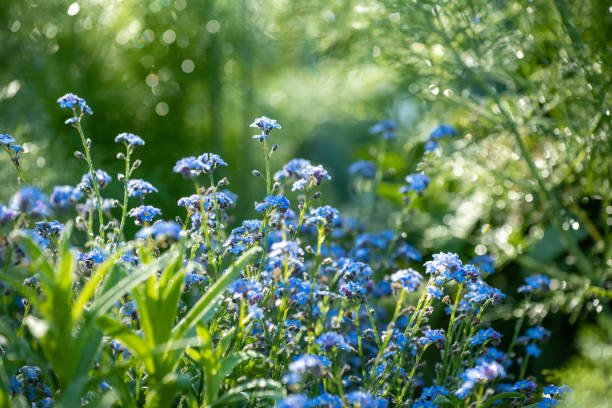The forget-me-not, with its sky-blue petals and golden center, is a pervasive yet often overlooked presence in the state’s ecosystem. But despite its small stature, this unassuming flower plays a vital role in maintaining the delicate balance of Alaska’s ecosystem, providing a crucial source of sustenance for pollinators, stabilizing soil, and supporting the rich biodiversity that underpins the state’s natural beauty. As we study the secret life of the forget-me-not, we begin to appreciate the profound impact this tiny flower has on the health and resilience of Alaska’s ecosystem and highlights the crucial role of forget-me-not (Myosotis Alpestris) in maintaining Alaska’s ecosystem services.

Temperature Tolerance:
Forget-me-nots are generally hardy plants, suitable for USDA zones 3 to 9. Different species have varying temperature preferences:
- Alpine Forget-Me-Not (Myosotis alpestris): Prefers cooler climates and is often found in mountainous regions.
- Woodland Forget-Me-Not (Myosotis sylvatica): Thrives in moderate temperatures and can tolerate some heat but prefers cooler conditions.
- Water Forget-Me-Not (Myosotis scorpioides): Grows well in wet areas and can handle a range of temperatures but benefits from cooler, moist environments.

Alaskan Region:
As Alaska is a mountainous region, so due to cooler temperature preference alpine forget-me-nots grow here and impact the climate accordingly. Let’s find out the environmental importance of forget-me-not and its effects due to climate change.
Key Findings:
1. Pollination:
Forget-me-not is a primary source of nectar and pollen for various pollinators, including bees, butterflies, and hummingbirds. This supports the pollination of other plant species, maintaining ecosystem health and diversity.

Nectar source: Forget-me-not flowers provide a rich source of nectar, attracting a variety of pollinators, including bees, butterflies, and hummingbirds.
Pollinator support: Forget-me-not’s pollinator-friendly flowers help support the local pollinator population, ensuring the continued health and diversity of the ecosystem.
2. Biodiversity:

Habitat provision: Forget-me-not’s growth habits and adaptations provide habitat for insects, small mammals, and birds.
Food web support: The plant’s leaves, stems, and flowers serve as a food source for herbivores, which in turn support predators and other animals.
3. Nutrient Cycling:
Forget-me-not’s symbiotic relationship with mycorrhizal fungi enhances soil fertility, benefiting other plant species and maintaining ecosystem productivity.

Nitrogen Fixation: Forget-me-not, like other plants in the borage family, has the ability to fix atmospheric nitrogen through its roots, making it available to other plants.
Soil Stabilization: The plant’s root system helps to stabilize soil, reducing erosion and preventing nutrient loss.
4. Ecosystem Resilience:
Forget-me-not’s ability to colonize disturbed or fragile soils promotes ecosystem resilience, enabling other plant species to establish themselves and maintain ecosystem function.

Adaptability: Forget-me-not can grow in a range of habitats, from wet meadows to dry rocky outcrops, making it a resilient species in the face of environmental changes.
Seed Bank: Forget-me-not produces a large number of seeds, which can remain dormant in the soil for extended periods.
Conclusion:
Forget-me-not plays a vital role in maintaining Alaska’s ecosystem services. Recognizing its importance and taking proactive steps to conserve and protect it is essential to ensuring the long-term health and resilience of Alaska’s ecosystems.











